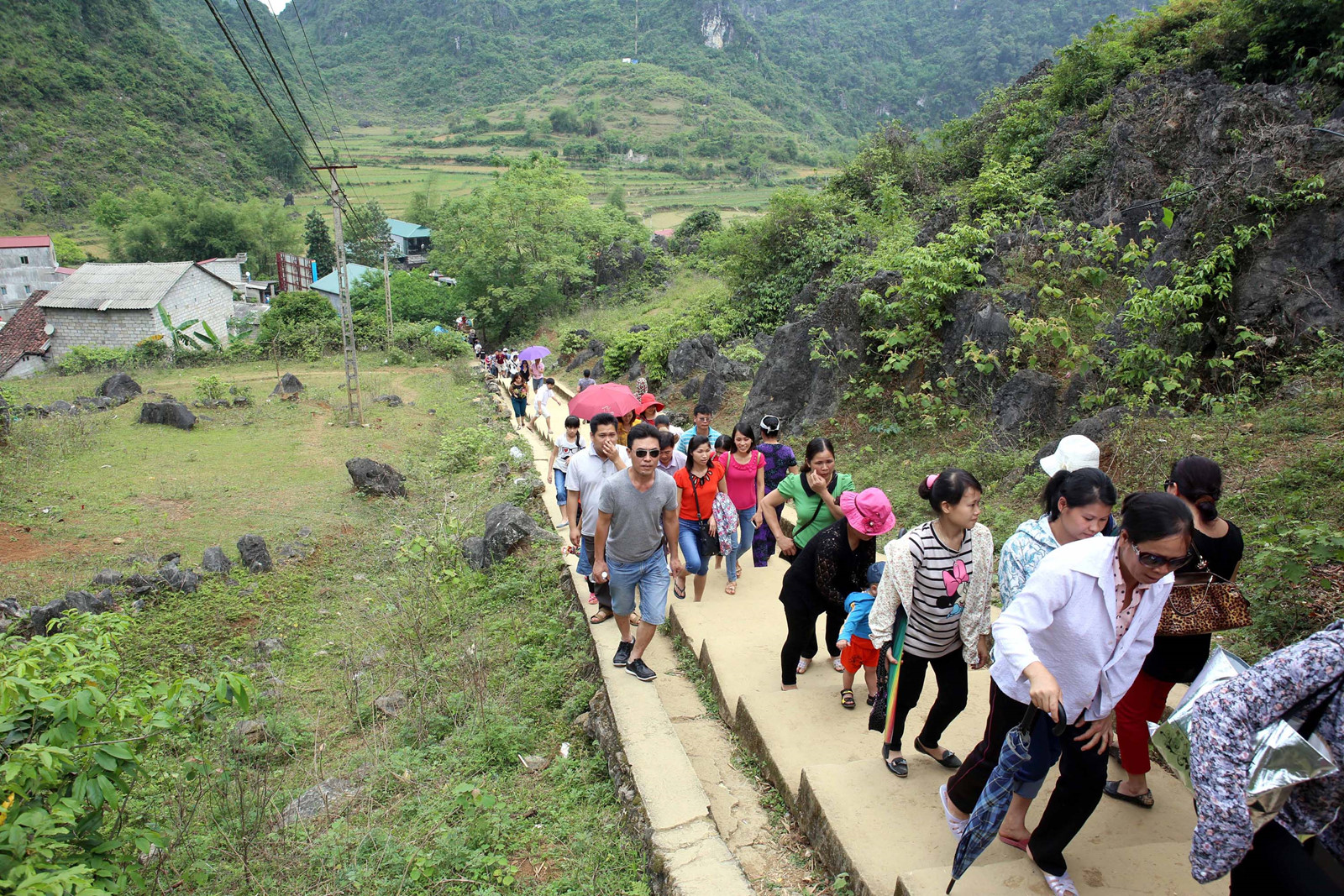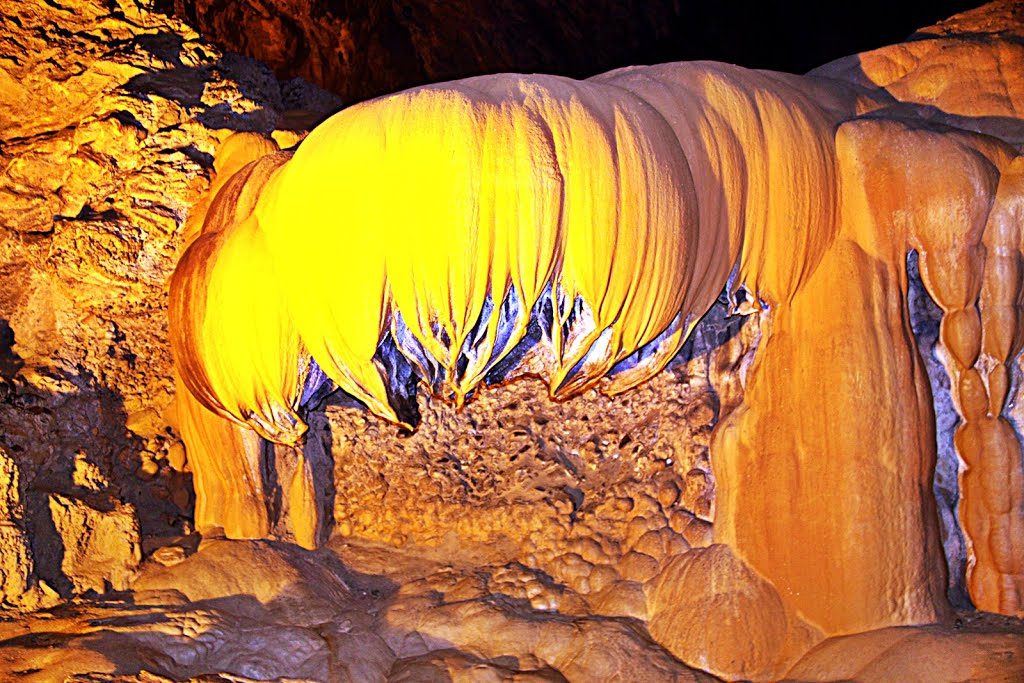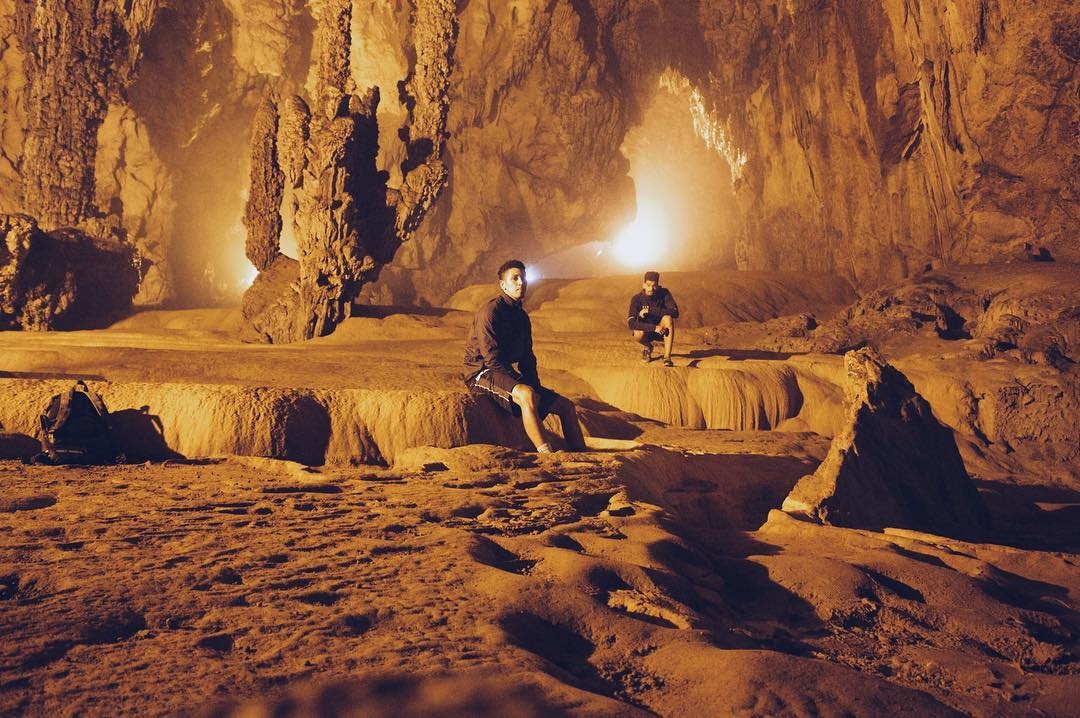By Lawrence Haywood, Mar 1, 2025
Top prize to the foreigner who can pronounce the name of this beautiful cave in Vietnam’s northeasterly Cao Bang Province. With its diacritics, Ngườm Ngao Cave reads as ‘Ngerr-um Ng-ow’; if you have problems pronouncing the Vietnamese family name ‘Nguyen’, then it’s probably best to call this one Tiger Cave, which is what it translates to. This cave used to be infested with tigers who would come out at night to steal chickens from local farmers of the Tay Hill Tribe, who named the cave in their local language.

The road to Nguom Ngao Cave
Discovered in 1921 and not opened to the public until 2006, Nguom Ngao Cave is one of the newest to be open for tourism in Vietnam. A British study discovered that the cave stretches back over 2km and reaches 60m up until the rock ceiling, with the three large entrances of Nguom Ngao, Nguom Lom, and Ban Thuon scattered around.
The area that tourists can visit covers the first 900m and contains some of the most extraordinary rock sculptures that you’re likely to see. The hanging lotus chandelier is a favorite of most explorers to the cave; its glistening, curved, and smooth façade looks more like rows of corn than limestone.
If you can stretch your imagination to that of a local Vietnamese, you’ll be able to see rice paddies, cacti, rocky forests, mythical animals, and the human form within the wide stone courtrooms of Nguom Ngao. All of these formations are made exclusively of limestone that has been bent and shaped over millions of years’ worth of wind and rain erosion.

Masterpieces in stones in Nguom Ngao Cave
The big draw of Cao Bang Province is most certainly Ban Gioc Waterfall, but a mere 2km from here is Nguom Ngao Cave. A motorbike is an ideal way to see both, but for anyone filled with dread at the idea of getting amongst the traffic on Vietnamese roads, you can walk the fairly uncomplicated route from the waterfall. Cheap motorbike taxis will be waiting around Ban Gioc and buses drive from Cao Bang City every half an hour or so, so wave one down to head to Nguom Ngao.
Being 2km from Ban Gioc Waterfall also means that Nguom Ngao Cave is 2km from the Chinese border. This proved a dangerous place to be living for the Vietnamese and Tay people of the area in 1979 when China attacked Cao Bang Province in retaliation for Vietnam helping to end the Chinese-backed Khmer Rouge regime in Cambodia. Many villagers hid out in the cave’s darker reaches, returning to their villages after 3 weeks of fighting in which small collections of Vietnamese troops again managed to outsmart a much more powerful invader.
Check our best tours to visit Cao Bang and Nguom Ngao Cave:
Besides the rock formations, there are some other fascinating aspects to Nguom Ngao, all of which can be discovered in relative peace, compared to the caves of Phong Nha or Halong Bay, because of the remoteness of the cave’s location. There are a few tour companies that offer excursions here, but the reality is that most explorers are independent or are on a very small private tour.

Nguom Ngao Cave
Walking down the narrow path, various lights lead the way and illuminate some of the more dramatic rock formations in the cave. Towards the back of the tourist-permitted section of the cave, pools of water sit in enclosed spaces, rising towards the ceiling and evoking images of the rice paddies that can be seen everywhere in this part of the country.
So, plan your Vietnam trip with Incredible Asia Journeys now to add this destination to your itinerary!